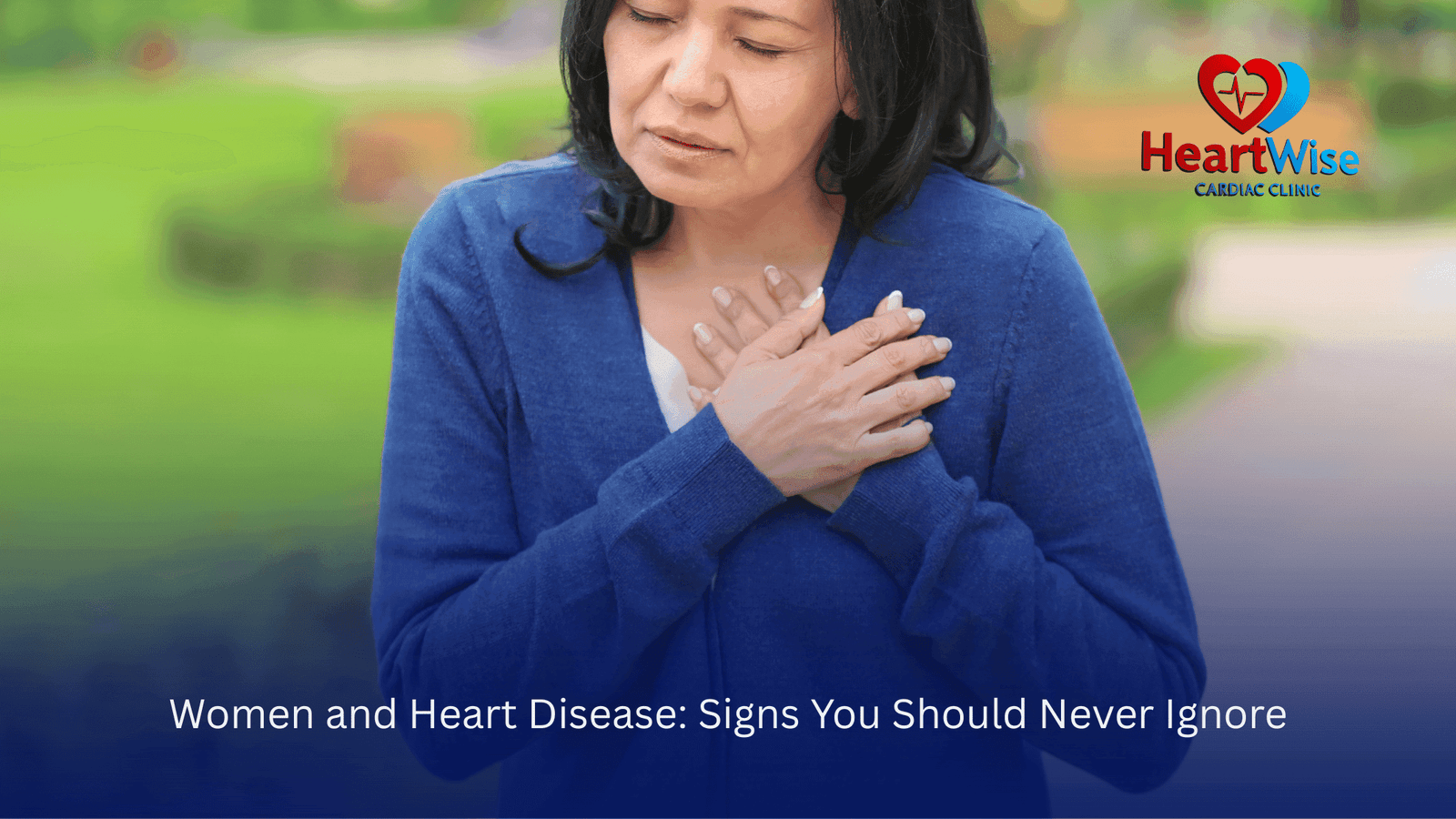Women and Heart Disease: Signs You Should Never Ignore
Heart disease is often seen as a health issue that predominantly affects men, but this is a dangerous misconception. In reality, heart disease is the leading cause of death among women worldwide. Despite this, many women remain unaware of their unique risks and symptoms, which can lead to delayed diagnosis and treatment.
Understanding the signs of heart disease specifically in women is crucial for early detection and prevention. This comprehensive guide will explore why heart disease in women is a serious concern, the signs and symptoms women should never ignore, risk factors, and practical steps to protect heart health.
Why Focus on Women and Heart Disease?
Heart disease kills more women than all forms of cancer combined. Yet, women’s heart symptoms often differ from men’s, leading to under-recognition by both patients and healthcare providers.
Key Facts:
- About 1 in 3 women die of heart disease.
- Women often experience subtler symptoms compared to the classic chest pain men report.
- Conditions like microvascular disease affect women more and may not show up on traditional tests.
- Hormonal changes during menopause can increase heart disease risk.
Because of these differences, women need to be especially vigilant about heart health.
Understanding Heart Disease in Women
Heart disease is a broad term that includes various conditions affecting the heart’s structure and function:
- Coronary artery disease (CAD): Narrowing or blockage of arteries that supply the heart muscle.
- Heart attack (Myocardial infarction): Blockage of blood flow causing damage to heart muscle.
- Heart failure: When the heart is unable to pump blood effectively.
- Arrhythmias: Irregular heartbeats.
- Microvascular disease: Affects the small arteries of the heart, more common in women.
Common Signs and Symptoms Women Should Never Ignore
Women’s heart disease symptoms can be more subtle and sometimes atypical. Recognizing these early signs can save lives.
1. Chest Discomfort or Pressure
While men often describe severe chest pain, women may experience mild chest discomfort, tightness, or pressure. This may feel like fullness or squeezing rather than sharp pain.
2. Pain in Other Areas
Women might feel pain or discomfort in the neck, jaw, shoulders, upper back, or stomach. These symptoms often precede or accompany chest discomfort.
3. Shortness of Breath
Difficulty breathing or feeling unusually tired during activities that were once easy could be an early warning sign.
4. Nausea or Vomiting
Unexplained nausea, indigestion, or vomiting, especially if accompanied by other symptoms, should not be ignored.
5. Sweating
Cold sweat or sudden excessive sweating without physical exertion can indicate a heart problem.
6. Fatigue
Unusual or extreme tiredness, especially if it comes on suddenly or lasts for days, is a red flag.
7. Lightheadedness or Dizziness
Feeling faint or dizzy without an obvious cause can signal a heart condition.
8. Palpitations
Awareness of irregular or rapid heartbeats may suggest arrhythmia.
Why Do Women Experience Different Symptoms?
Women’s smaller arteries and differences in hormonal levels influence how heart disease presents. Microvascular disease, common in women, causes chest pain without artery blockage seen on standard tests.
Hormonal fluctuations during menstruation, pregnancy, and menopause affect blood vessels and cholesterol, impacting heart health uniquely.
Risk Factors Specific to Women
While many heart disease risk factors overlap between genders, women have some unique or intensified risks:
1. Menopause
The drop in estrogen levels during menopause can increase bad cholesterol and decrease good cholesterol, raising heart disease risk.
2. Pregnancy Complications
Conditions like preeclampsia, gestational diabetes, and high blood pressure during pregnancy increase future heart disease risk.
3. Autoimmune Diseases
Women are more prone to autoimmune disorders such as lupus and rheumatoid arthritis, which increase inflammation and heart risk.
4. Depression and Stress
Women are more likely to experience depression and anxiety, both linked to increased heart disease risk.
5. Smoking
Smoking is especially harmful to women’s hearts, significantly raising the risk of heart disease.
Prevention and Protective Measures
Knowing the signs is only part of the solution. Taking proactive steps to protect heart health is equally important.
1. Maintain a Healthy Diet
Focus on fruits, vegetables, whole grains, lean proteins, and healthy fats. Limit salt, sugar, and saturated fats.
2. Regular Exercise
Aim for at least 150 minutes of moderate-intensity exercise weekly. Include cardio, strength, and flexibility workouts.
3. Manage Stress
Practice relaxation techniques like yoga, meditation, or deep breathing to reduce stress impact.
4. Control Blood Pressure and Cholesterol
Regular check-ups help monitor and manage these critical factors.
5. Avoid Tobacco
Quit smoking and avoid secondhand smoke.
6. Limit Alcohol
Drink in moderation — up to one drink per day for women.
7. Get Regular Screenings
Routine health exams, including heart tests if recommended, are vital.
When to See a Doctor
Seek immediate medical help if you experience:
- Sudden chest pain or pressure
- Severe shortness of breath
- Sudden weakness or numbness, especially on one side
- Severe dizziness or fainting
- Sudden severe headache or confusion
For persistent or recurring symptoms such as unexplained fatigue, mild chest discomfort, or palpitations, consult a healthcare provider promptly.
Conclusion
Heart disease is a leading health threat for women but remains under-recognized. Understanding the unique signs and risk factors that affect women empowers early detection and prevention. Listening to your body and acting quickly can save your life.
If you or someone you love experiences any symptoms discussed here, don’t ignore them. Reach out to a healthcare professional to ensure your heart stays healthy for years to come.








